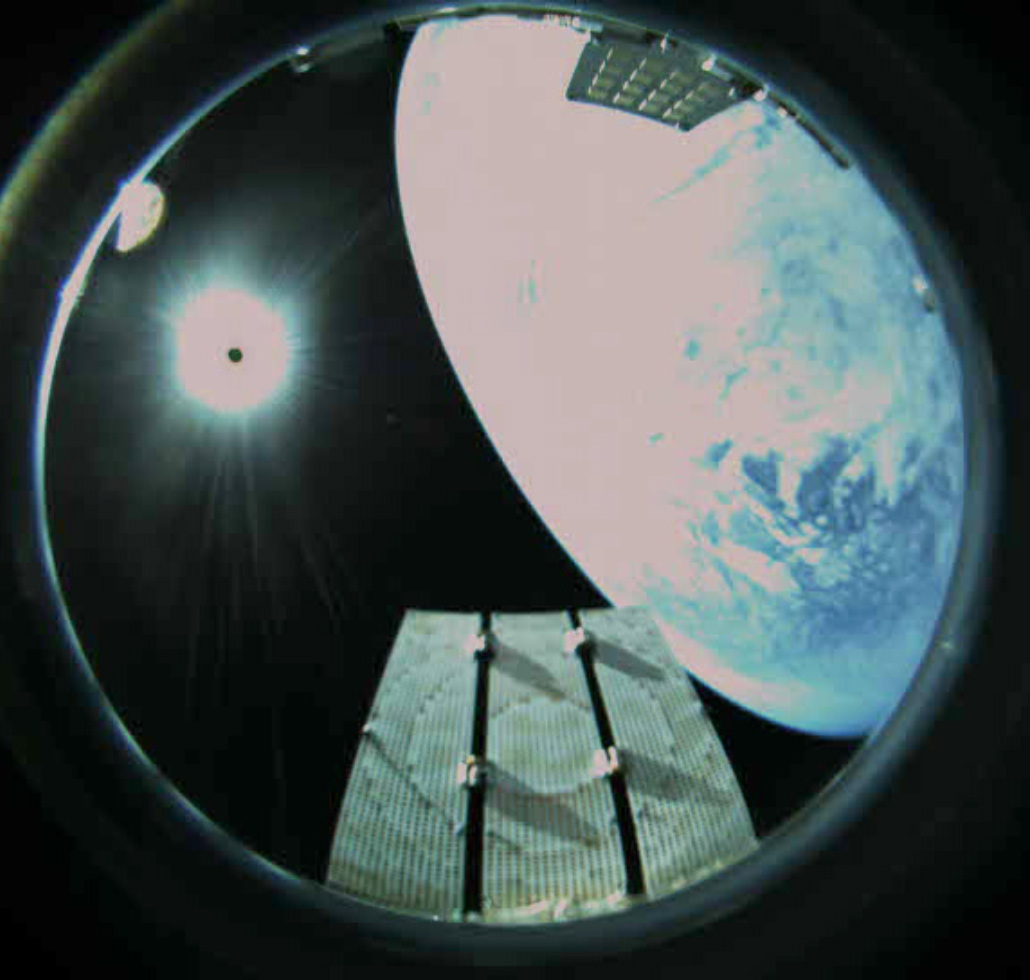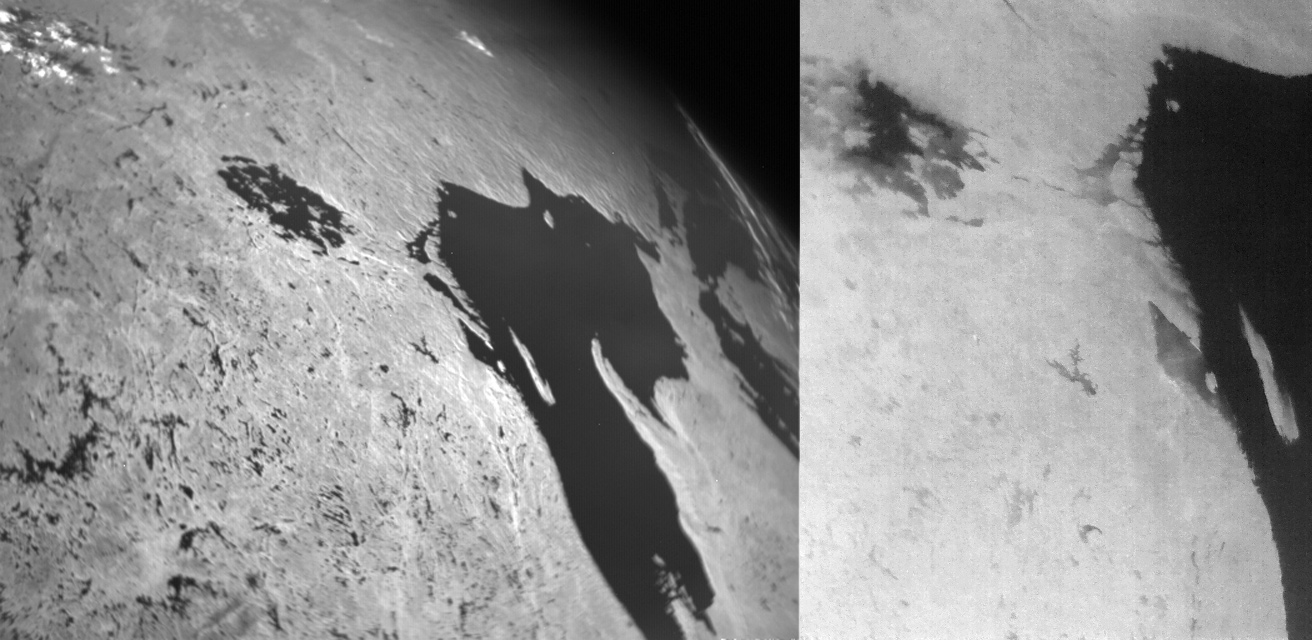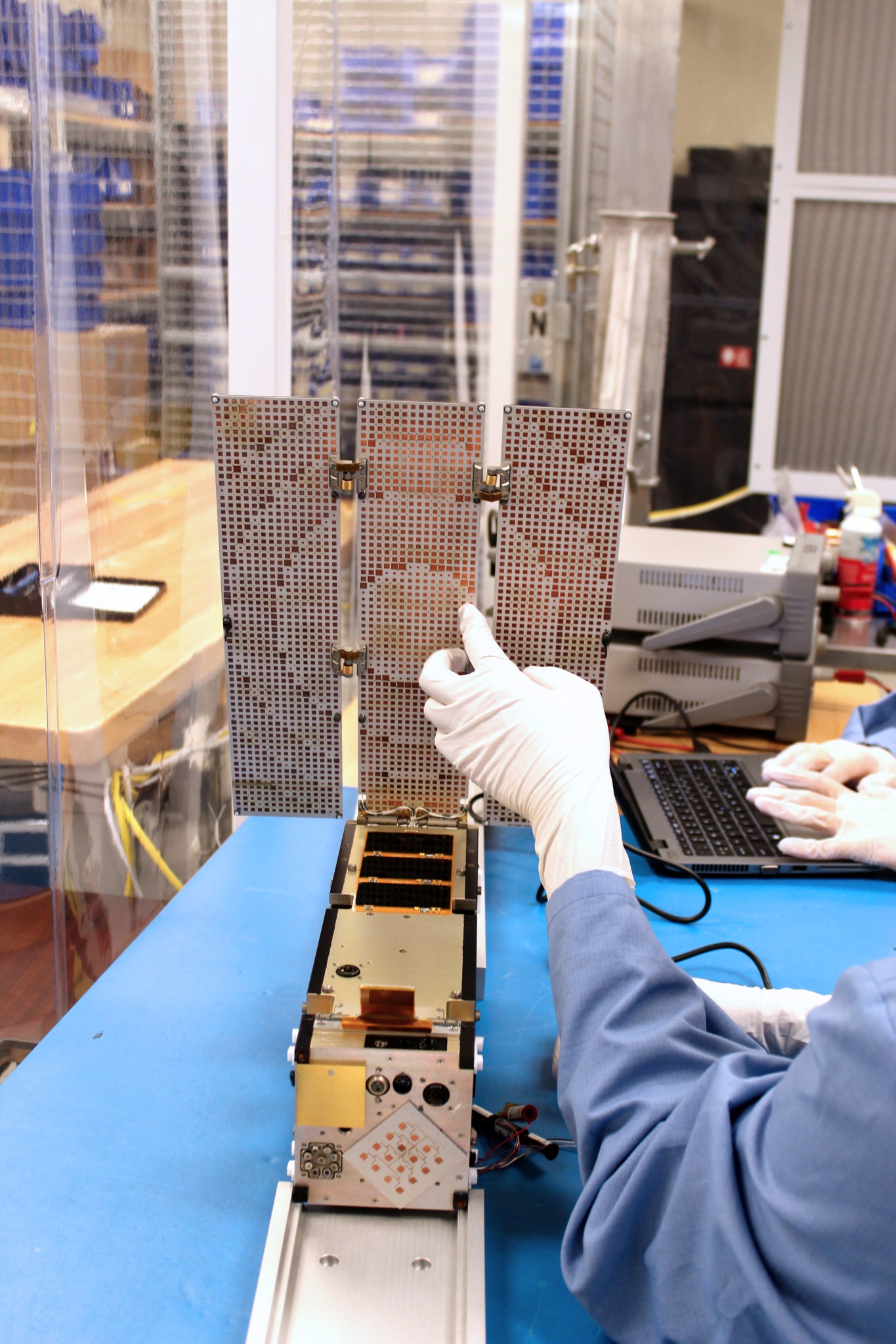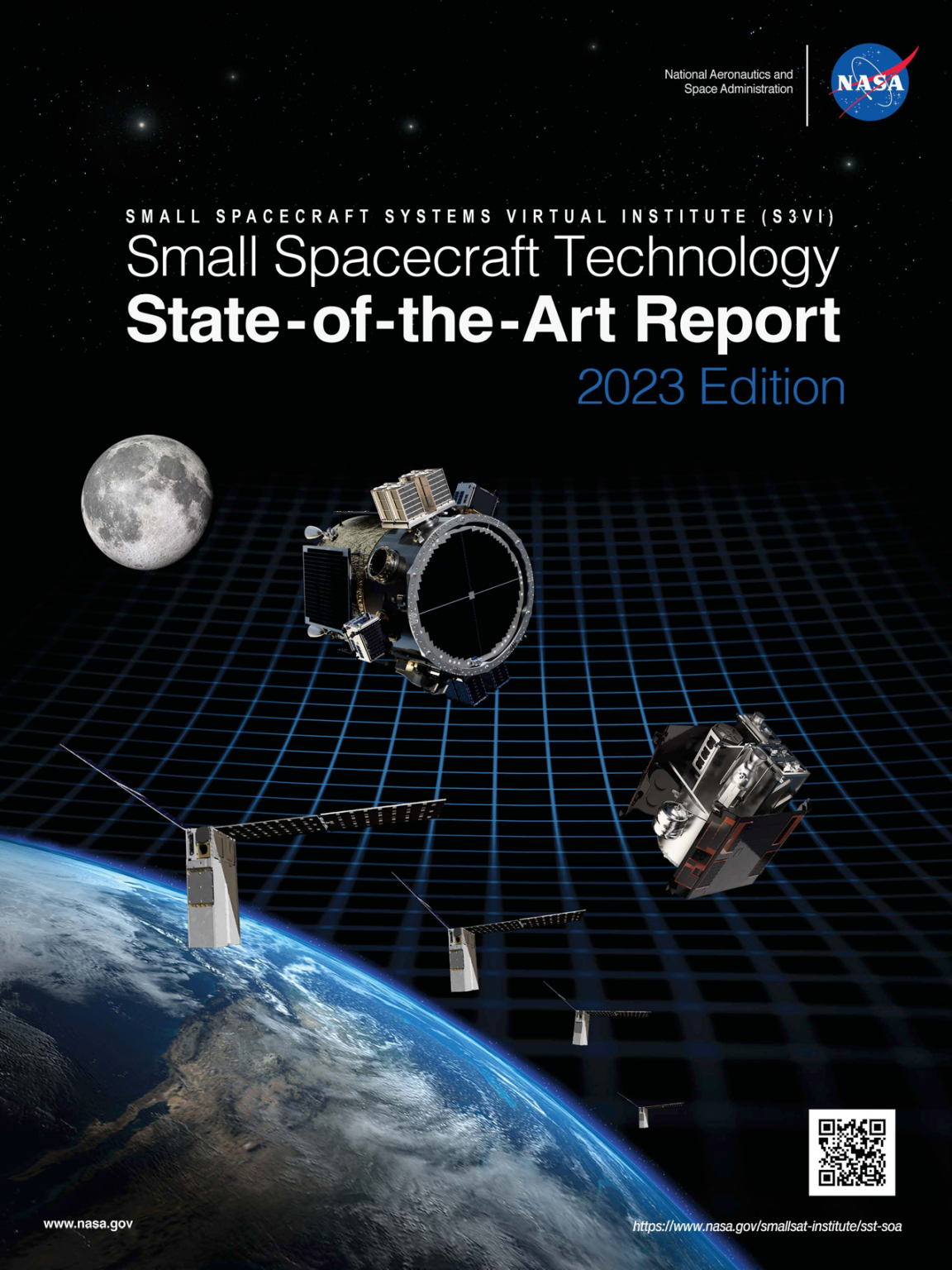Increasing Cubesat Downlink Data Rates to 100 Mbps
The Integrated Solar Array and Reflectarray Antenna (ISARA) mission successfully demonstrated a reflectarray antenna that increases downlink data rates for CubeSats from the existing baseline rate of 9.6 kilobits per second (kbps) to more than 100 megabits per second (Mbps).
The reflectarray antenna consists of three panels which have an array of printed circuit board patches on them. The size of the patches are adjusted so that the phase of the re ected feed illumination collimates the radiation in much the same way a parabolic dish re ector would. Unlike a parabolic dish, however, the reflectarray panels are at, which enables them to be folded down against the CubeSat. On the opposite side of the printed reflectarray antenna, solar cells have been added. This makes the overall antenna/solar array panel assembly slightly thicker, but the panels are stowed in the “dead space” between the launch rails that would have otherwise been left empty. This combination of antenna and solar cells makes for a very e cient use of CubeSat volume, leaving plenty of room for payloads such as science instruments or imaging systems.
The ISARA technology has been validated in space during a five-month mission that measured key reflectarray antenna characteristics, including how much power can actually be focused on a small, low cost ground station. To start the in-orbit test, ISARA successfully deployed its reflectarray antenna, as can be seen in a remarkable sheye lens photo taken after deployment. The spacecraft then used its high precision attitude determination and control system to stabilize itself and the onboard Global Positioning System (GPS) receiver to obtain accurate orbital location information. An Ultra High Frequency (UHF) communications system provided satellite command and control.

During the in-orbit test, ISARA’s reflectarray antenna transmitted a Ka-band signal to a ground station located at NASA’s Jet Propulsion Laboratory (JPL) in Pasadena, California. The spacecraft’s onboard location and orientation data was used to point the antenna beam toward the ground station. The received signal confirmed the antenna gain, which is a key measure of how efficiently the antenna focuses power. The in-orbit gain data was found to match pre-flight ground measurements, proving that the antenna works as designed in space.
The stowage volume and spacecraft power provided by ISARA technology also enabled the ISARA mission to carry a secondary payload known as the CubeSat Multispectral Observation System (CUMULOS), an experimental Aerospace Corporation remote sensing payload. CUMULOS is composed of a 0.4-0.8 micrometer (μm) visible camera, a 0.9-1.7 μm short-wavelength infrared camera, and an 8.0-13.5 μm long-wavelength infrared, microbolometer camera. The photo below shows the first images taken by CUMULOS.
The CUMULOS sensors provide a small-aperture, large field-of-view, remote sensing payload suitable for testing the performance of passively-cooled commercial sensors for weather and environmental monitoring missions. CUMULOS is designed for point-and-stare imaging, permitting almost simultaneous 3-band coverage of regions approximately 200 x 150 kilometers (km) in size, at ground sample distances from 130 to 400 meters from an orbital altitude of 450km. Remote sensing applications to be investigated include: cloud cover detection, surface temperature measurement, hotspot detection (including fires, gas flares, and volcanic activity), and detection of nighttime lights.

With the success of the ISARA mission, the reflectarray antenna technology is now available for use on other missions that need high bandwidth telecommunications. The ISARA technology enables CubeSats and other small satellites to serve as viable platforms for performing missions that were previously only possible on larger and more costly satellites. For a modest increase in mass, volume and cost, the high data rate this technology enables will pave the way for high value science missions and formation flying missions that use distributed CubeSats and small satellites.
The first major application of ISARA technology was MarCO, the first interplanetary CubeSat mission, in which two briefcase-sized CubeSats flew to Mars alongside the InSight spacecraft in November 2018 (jpl.nasa.gov/cubesat/missions/marco.php). The MarCO mission was made possible by the folded panel reflectarray technology developed on ISARA. ISARA technology provided the only antenna capable of meeting two difficult MarCO requirements: stowage of the 60 cm x 30 cm antenna into a thin 1.25 cm slice to allow space for the other MarCO subsystems, and the ability for an antenna to scan 23° away from the spacecraft to provide for a direct communications line to Earth.
JPL developed the ISARA payload while The Aerospace Corporation in El Segundo, California designed and built the CubeSat and secondary payload, CUMULOS. JPL partnered with Pumpkin Inc. in San Francisco, California, to develop the solar array.
ISARA was selected for a flight opportunity as part of the CubeSat Launch Initiative in NASA’s Human Exploration and Operations Mission Directorate. The ISARA spacecraft was launched November 12, 2017 on the Cygnus Resupply Mission (OA-8) from the Mid-Atlantic Regional Spaceport, Wallops Flight Facility, in Virginia.
The ISARA mission is managed and funded by the Small Spacecraft Technology Program (SSTP) within the Space Technology Mission Directorate. The SSTP expands U.S. capability to execute unique missions through rapid development and in space demonstration of capabilities for small spacecraft applicable to exploration, science, and the commercial space sector. The SSTP enables new mission architectures through the use of small spacecraft with goals to expand their reach to new destinations, and challenging new environments.
For more information on the Small Spacecraft Technology Program:
https://www.nasa.gov/smallspacecraft
https://www.nasa.gov/spacetech/feature/CubeSat_Missions_Pushing_Boundaries_of_Technology
For more information about ISARA, please contact:
Dr. Richard E. Hodges
ISARA Principal Investigator
Jet Propulsion Laboratory
Richard.E.Hodges@jpl.nasa.gov
Dee W. Pack
CUMULOS Principal Investigator
Remote Sensing Department
The Aerospace Corporation
Dee.W.Pack@aero.org
Roger C. Hunter
Small Spacecraft Technology Program Manager
Space Technology Mission Directorate
NASA Ames Research Center
Roger.C.Hunter@nasa.gov
Christopher E. Baker
Small Spacecraft Technology Program Executive
Space Technology Mission Directorate
NASA Headquarters
Christopher.E.Baker@nasa.gov






























